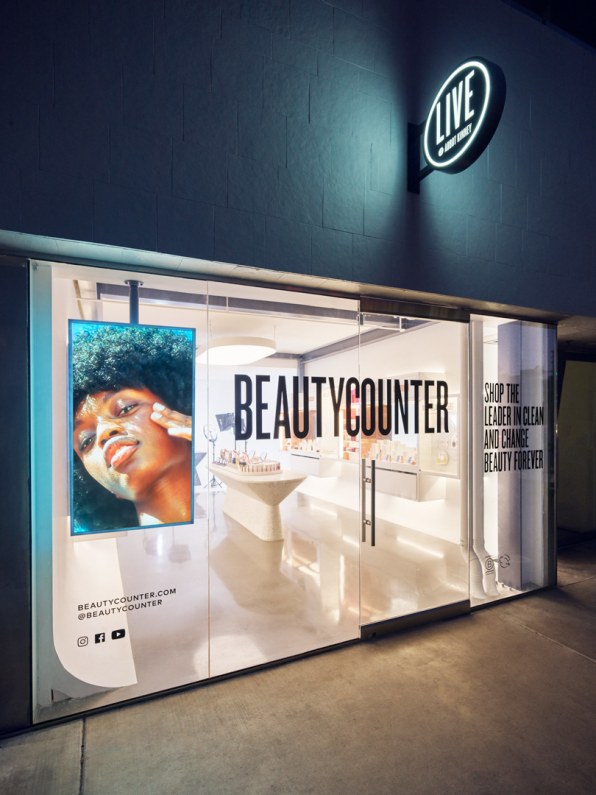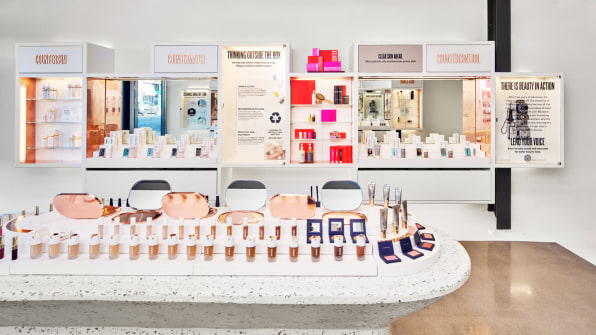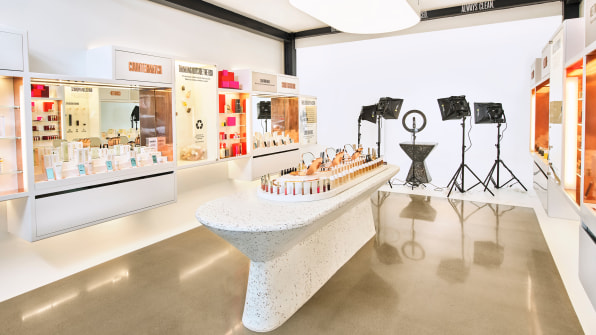Contemporary Living Furniture Store
For the past nine months, I've rarely ventured into stores. And while I'm mostly content to browse the internet for what I need, there are times when it really helps to shop in person—such as trying out makeup products, for instance. Fortunately, some brands are trying to bridge the gap between online and in-person shopping.

Beautycounter, a clean beauty startup, is among them. In its new store in Los Angeles, which opens Wednesday, it installed a studio that will live-stream in-store experiences, from browsing the aisles to makeup demonstrations to community events. Customers watching from home can comment and receive live responses from the person on-screen. "It replicates the two-way conversation you would be able to have with the brand in-store," says Gregg Renfrew, founder and CEO. "While the customer can't actually test a product from across their screen, they can talk to an expert about what color might work best or what look they're trying to create."
For the past decade, brick-and-mortar retail has been on the decline, as consumers have increasingly opted to shop online, but the pandemic has accelerated that shift by about five years, according to IBM. Sales from nonessential retailers—such as department stores—are expected to plummet by 60% this year; meanwhile, e-commerce is projected to grow by nearly 20%, particularly in categories such as groceries. As many as 25,000 stores are expected to permanently close by the end of 2020.

But rather than assuming physical retail is dead, Renfrew says it makes sense to think creatively about the role that stores play in consumers' lives, especially as data from McKinsey found that the pandemic has made U.S. consumers far less loyal, with 75% of them trying out new companies and new ways of shopping. While this data can be frightening to brands, Renfrew sees an opportunity to win over new customers by offering entertaining new ways to shop.

That's where the studio comes in. Outside the store on Abbot Kinney, there's a large sign that lights up when a live recording is happening, much like an old-fashion radio studio. Inside, the front part of the store is traditional retail, but in the back, there's a stage equipped with professional lighting and audio equipment. Throughout the day, Beautycounter's employees will live-stream themselves on a platform called Bambuser, which will be broadcast on Beautycounter's website. If a customer sees a product they like, they'll be able to click to see the product page.
Beautycounter also wants other members of its community to use the studio. It has a network of 50,000 independent consultants who sell its products, often using Instagram or Facebook to connect with customers. If a consultant happens to be in L.A., they can swing by the store to film content; influencers, actresses, and other celebrities are also welcome to use the studio to stream Beautycounter content. "It's really open to anybody who wants to use it," says Renfrew.
The content that comes out of this studio mimics what we're used to seeing on Instagram, and in some cases, the brand expects to stream the videos on its social platforms. But by creating a hub on its own website for these live sessions and videos, Beautycounter will have more control of the experience.
It's unclear how customers will respond to this content, a fact Renfrew acknowledges. But what is clear to her is that it's vital to find new ways to engage customers. "This is an experiment," she says. "I'm sure there will be 500 iterations of it before we arrive at the final version."
WATCH: Beautycounter's Gregg Renfrew on the future of beauty retail
Contemporary Living Furniture Store
Source: https://www.fastcompany.com/90580782/why-this-beauty-startup-is-live-streaming-everything-inside-its-new-store
